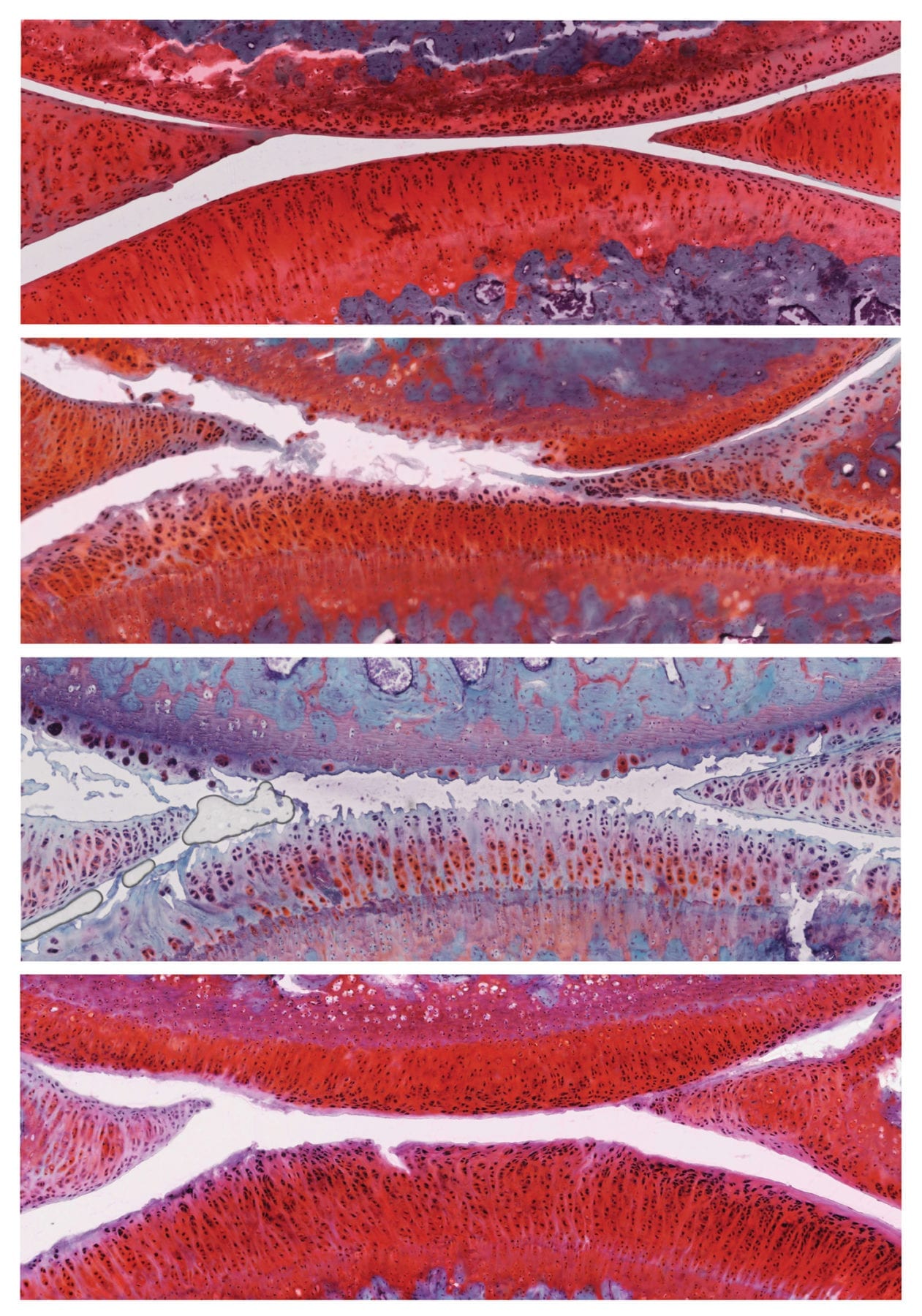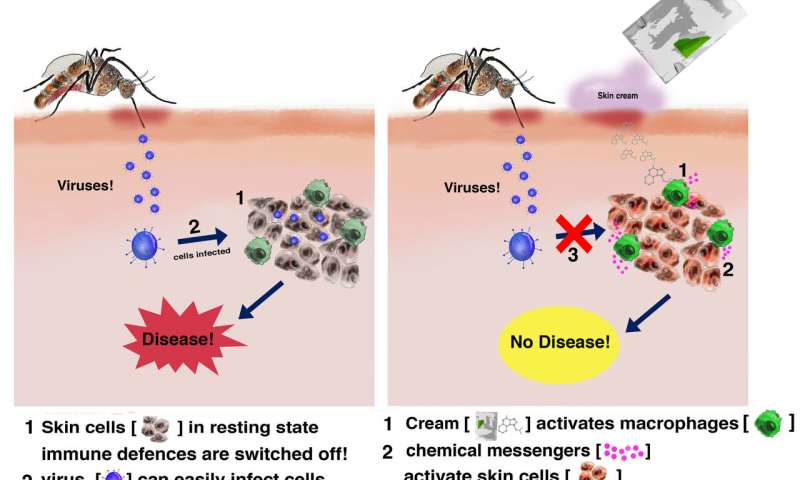
The top image shows a knee joint in a healthy rat. (White indicates cartilage.) The second image from top shows a joint with grade 2 untreated osteoarthritis. The third image shows a joint with osteoarthritis that has worsened from grade 2 to grade 4 after six weeks of placebo therapy. The bottom image shows a joint with osteoarthritis that improved from grade 2 to grade 1 (mild) after six weeks of combination therapy with alphaKlotho and sTGFbR2.
Credit: Salk Institute
The Latest Updates from Bing News & Google News
Go deeper with Bing News on:
Osteoarthritis
- New study sheds light on the debate surrounding two types of shoulder replacement surgery for osteoarthritis
A new study has provided valuable insights into the ongoing debate surrounding two types of shoulder replacement surgery: reverse total shoulder replacement and anatomical total shoulder replacement ...
- A Blood Test Can ID Knee Osteoarthritis Eight Years Before an X-Ray
In osteoarthritis, the tissues that cushion joints begin to degenerate, leading to stiffness, pain, and swelling. According to the World Health Organization, osteoarthritis affects over 500 million ...
- Knee Osteoarthritis Could Be Predicted Years In Advance By Blood Tests
A new study suggests a blood test may be able to detect the signs of knee osteoarthritis at least eight years before they appear on x-rays. Researchers analyzed the blood of 200 white British women, ...
- Blood test detects signs of osteoarthritis 8 years before X-ray
Researchers have created a new blood test that could lead to earlier intervention for those with osteoarthritis.
- Blood Test Might Predict Knee Osteoarthritis Years Early
MONDAY, April 29, 2024 (HealthDay News) -- A blood test could help doctors spot the signs of knee osteoarthritis at least eight years before it shows up on X-rays, a new study claims.
Go deeper with Google Headlines on:
Osteoarthritis
[google_news title=”” keyword=”osteoarthritis” num_posts=”5″ blurb_length=”0″ show_thumb=”left”]
Go deeper with Bing News on:
Reversing osteoarthritis
- New study sheds light on the debate surrounding two types of shoulder replacement surgery for osteoarthritis
A new study has provided valuable insights into the ongoing debate surrounding two types of shoulder replacement surgery: reverse total shoulder replacement and anatomical total shoulder replacement ...
- A Blood Test Can ID Knee Osteoarthritis Eight Years Before an X-Ray
Some things that increase the chances of osteoarthritis include a family history of osteoarthritis, repetitive motion, injury, or obesity. There is no way to reverse osteoarthritis, which is often ...
- ‘World’s most folded man’ finally stands up straight after 28 years thanks to life-changing surgery
A MAN dubbed the “folded man” has had life changing surgery after spending years hunched over. Li Hua, from China, lived with the autoimmune disease ankylosing spondylitis for nearly 30 years ...
- Osteoarthritis, Osteoporosis and Osteopenia: What’s the Difference?
What's in a name? Well, if it's osteoporosis, osteopenia and osteoarthritis, for starters, a shared prefix. "Osteo" means bone, and that matching descriptor also spells confusion for many ...
- Rheumatoid Arthritis and Osteoarthritis patients genetically susceptible for developing COPD, suggests study
Rheumatoid Arthritis and Osteoarthritis patients are genetically susceptible to developing COPD, suggests a study published in the Frontiers in Medicine.Observational studies have reported ...
Go deeper with Google Headlines on:
Reversing osteoarthritis
[google_news title=”” keyword=”reversing osteoarthritis” num_posts=”5″ blurb_length=”0″ show_thumb=”left”]









